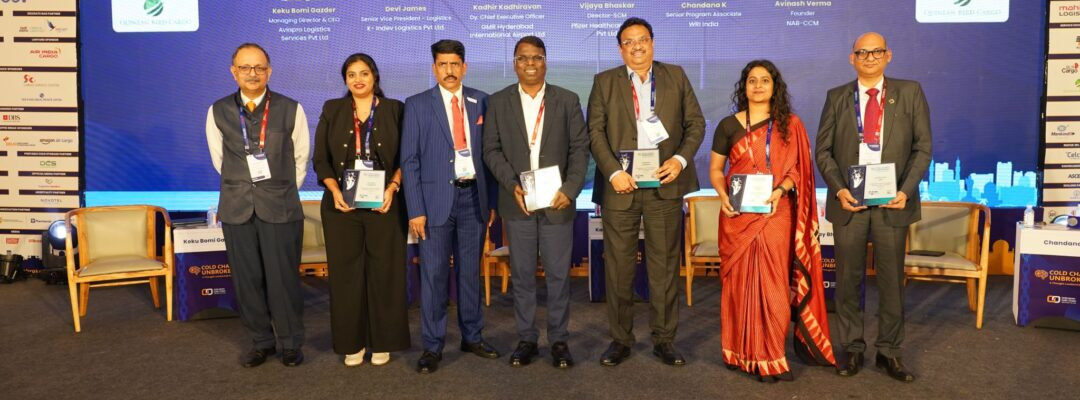Decarbonizing logistics for a sustainable tomorrow
- The cold chain industry is under pressure to innovate while reducing its environmental impact, covering temperature-sensitive goods from pharmaceuticals to perishables. Leaders stress that achieving net-zero emissions requires energy-efficient technologies, renewable energy integration, and data-driven operational strategies.
- Technology and politics play a central role. Energy-efficient cooling, renewable energy, IoT monitoring and data analytics help optimize routes, reduce emissions and improve compliance. Governments can accelerate the adoption of green solutions through regulations and subsidies.
- Infrastructure investment is crucial, especially in emerging markets. Upgrading facilities to green standards, supported by public-private partnerships, coupled with digital transformation for real-time monitoring, traceability, and waste reduction, positions the sector for operational efficiency and sustainable growth.
From pharmaceuticals to perishable products, the cold chain industry faces increasing expectations to innovate, invest in green infrastructure and leverage digital technologies, all while aligning with emerging regulatory frameworks.
The cold chain involves the transportation and storage of temperature-sensitive goods such as medicines and perishable items, and is a significant contributor to global greenhouse gas emissions. Addressing this problem requires a comprehensive approach that integrates sustainability into every aspect of the supply chain.
As Kiko Bumi Gazder, Managing Director and CEO, Aviapro Logistic Services Pvt Ltd, emphasizes, “The cold chain industry is at a critical juncture. We must innovate not only to meet demand but to do so in an environmentally responsible way.”
This perspective aligns with the broader industry consensus that achieving net-zero emissions requires a paradigm shift toward sustainable practices. This includes adopting energy-efficient technologies, renewable energy sources, and data-driven strategies.
Innovation and alignment
Devi Jessie Marie James Melchior, Senior Vice President of Logistics at K-Indev Logistics, highlighted the role of technology in reducing the carbon footprint of cold chain operations. “Implementing energy-efficient cooling systems and utilizing renewable energy sources can significantly reduce emissions,” she noted. “Moreover, the adoption of data analytics allows for optimization of routes and reduction of fuel consumption.”
Chandana K, senior program associate at the World Resources Institute in India, provided insights into policy frameworks that can incentivize sustainable practices. “Governments play a crucial role by introducing regulations that enforce energy efficiency and by providing support for green technologies,” she said. “Policies like these can accelerate the adoption of sustainable practices throughout the industry.”
These technological advances and policy initiatives are essential to creating an ecosystem that supports decarbonization efforts. Incorporating renewable energy sources, such as solar and wind, into cold storage facilities can significantly reduce reliance on fossil fuels. In addition, implementing energy-efficient cooling systems can reduce energy consumption and associated emissions.
Infrastructure challenges and investment needs
Kader Kaderavan, Executive Vice President, GMR Hyderabad International Airport Ltd, discussed the infrastructure challenges in implementing sustainable cold chain solutions. “Upgrading existing facilities to meet green standards requires significant investments,” Kaderavan explained. “However, the long-term benefits, including lower operating costs and compliance with international standards, justify the expense.”
The need to invest in infrastructure is particularly urgent in emerging markets, where cold chain facilities may be outdated or insufficient to meet growing demand. Public-private partnerships can play a pivotal role in financing these upgrades, ensuring that sustainability is integrated into the core infrastructure of the cold chain sector.
Digitalization as a catalyst for sustainability
Avinash Verma, Founder, NAB-CCM, emphasized the transformative potential of digital technologies in promoting sustainability. “IoT-enabled sensors and blockchain technology can provide real-time monitoring and tracking, ensuring compliance with temperature requirements and minimizing waste,” Verma explained. “Digitalization not only improves efficiency, but also contributes to sustainability by reducing resource waste.”
Adopting digital technologies facilitates real-time visibility across the cold chain, enabling stakeholders to proactively monitor and manage shipments. This capability is essential to maintain product quality and reduce spoilage, thus reducing waste and associated emissions.
